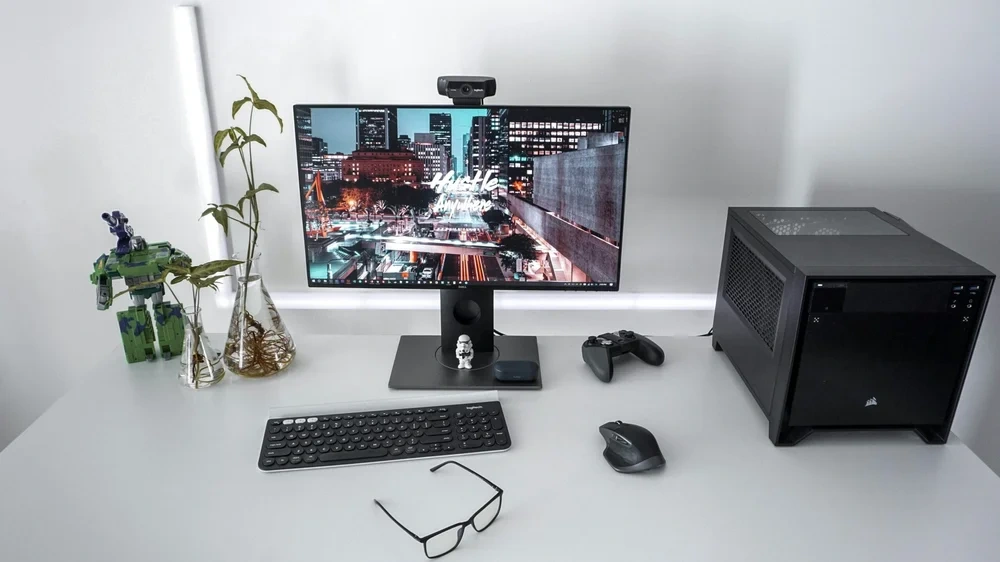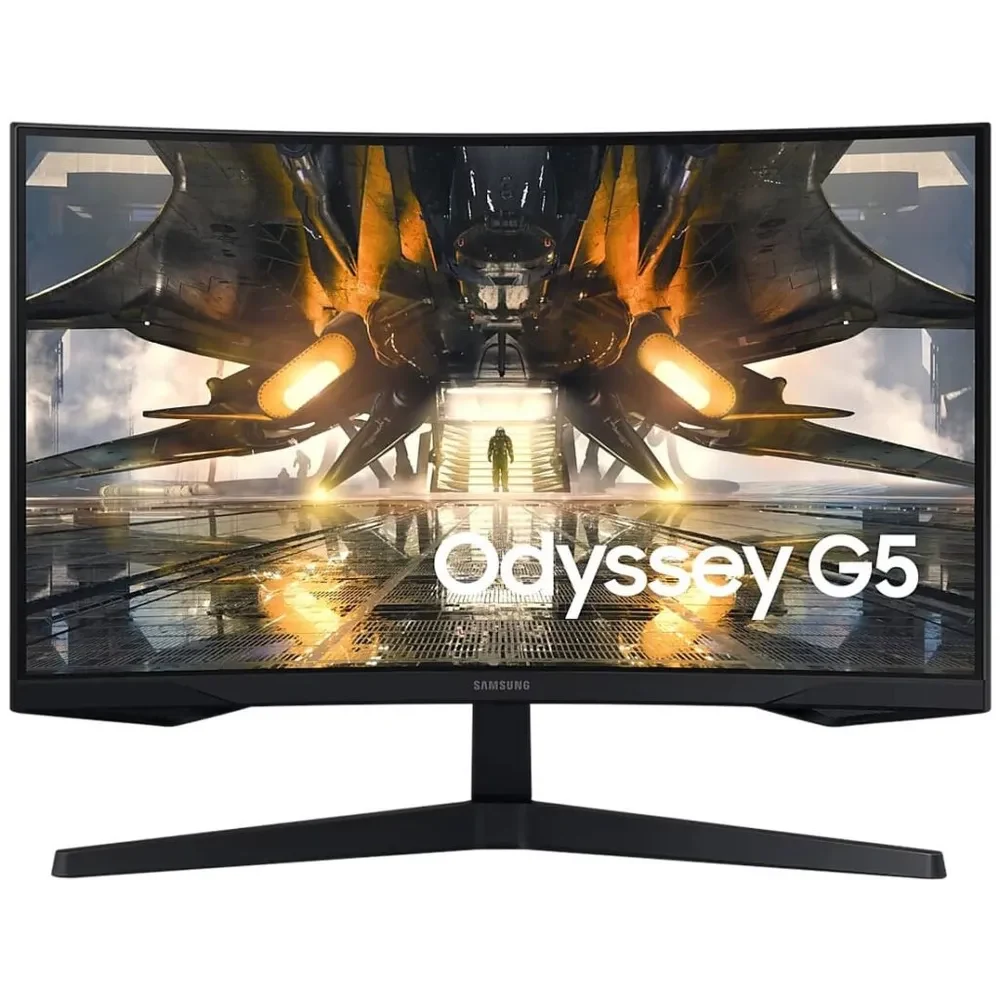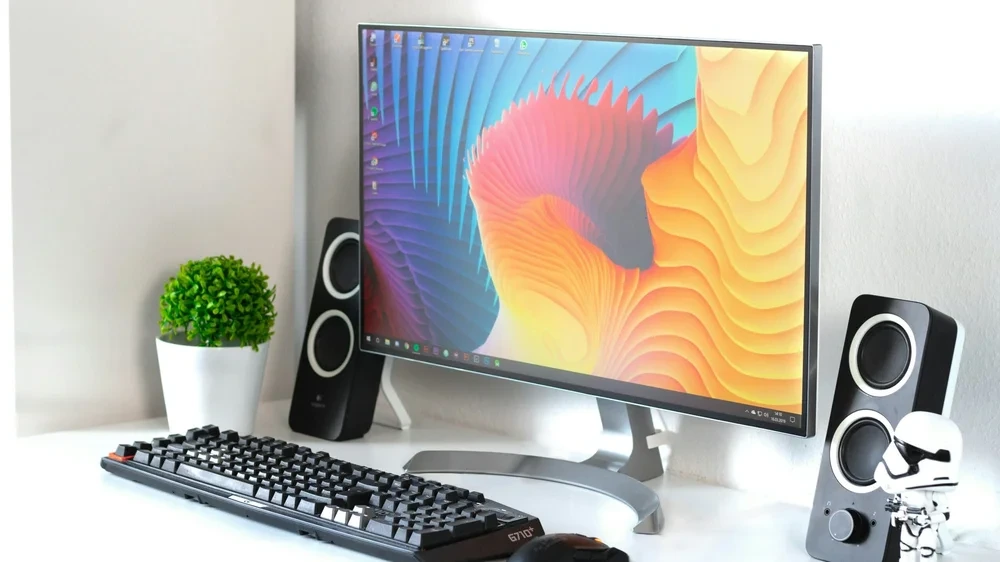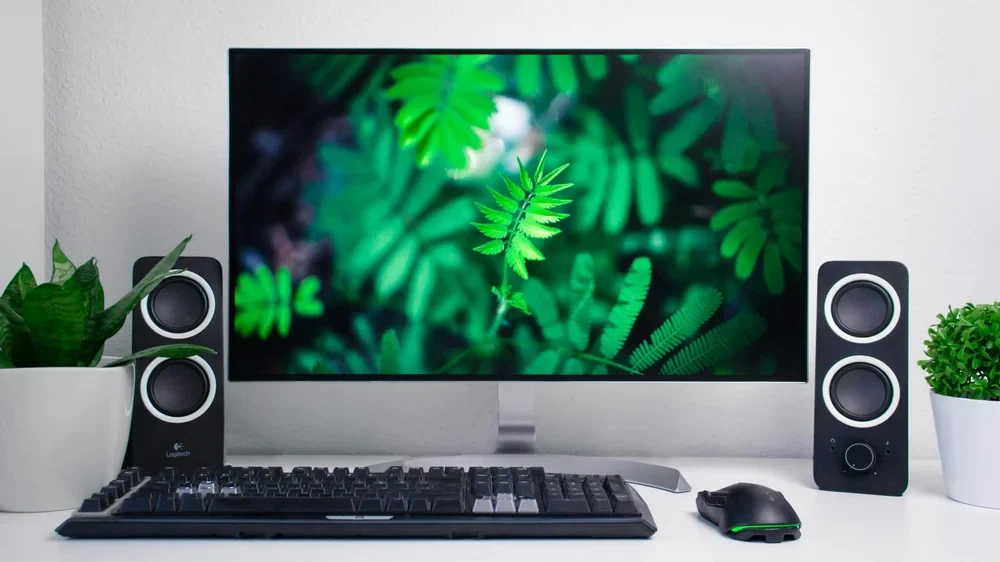The monitor is an output device that has transformed from bulky Cathode Ray Tube (CRT) systems into sleek, flat panel monitors. Today’s offerings now utilize technologies like Liquid Crystal Display (LCD) and Light Emitting Diode (LED), significantly enhancing the graphics and display of information on computer screens. The computer monitor takes the role of an electronic output portal, converting the signals received from the computer’s graphic adapter into visual display information.
It employs a multitude of pixels, each capable of displaying a different color, to form a coherent picture.
The quality of this display depends on various factors, such as the aspect ratio, brightness, contrast ratio, and response time of the monitor. The computer monitor also aids in graphic design by providing high-resolution display information.
Understanding the Function of a Monitor
The monitor is an essential output device that displays a user’s programs, commands, and features, making it an integral part of our daily computing processes. This indispensable tool serves as our window into the digital world, making complex data visually comprehensible.
As a cornerstone of computer technology, the monitor has gone through various transformations, shifting from the bulkiness of CRT to the sleek designs of LCD and LED.
Each type represents a story of technological advancement, playing a significant role in the evolution of monitors.
The primary function of a monitor in a computer is to provide access to the digital domain, transforming input signals into a graphical interface for users to interact with. Thus, the computer monitor serves as an essential output device that displays information to the user, with its effectiveness depending on various aspects like aspect ratio, brightness, contrast ratio, refresh rate, and response time.
How a Computer Monitor Works

As an output device, monitors now also facilitate our interactions with the computer system, helping us to execute commands and view functions such as video playback, graphic design, gaming, and data analysis. From enabling us to interact with graphics on a touch screen to letting us manipulate the display’s brightness and contrast ratio via settings, the modern monitor is an essential element of our computing experience.
It’s not just the monitor’s functions that have evolved – its form has too.
Large, clunky CRT monitors have been widely replaced by slimmer LCD and LED models, a shift driven as much by space considerations as by the desire for improved image quality and energy efficiency.
Let’s not forget the graphics adapter. The computer’s graphics adapter plays a vital role in driving the monitor and decoding computer data into understandable and usable visuals. Whether you are playing a high-definition video game or watching a movie, the function of a computer monitor significantly influences your overall experience.
Modern Computer Monitors
- Modern monitors facilitate interaction with the computer system, enabling command execution and various functions like video playback, graphic design, gaming, and data analysis.
- Advancements in monitor technology allow users to interact with graphics on a touch screen and manipulate display settings such as brightness and contrast ratio.
- Large CRT monitors have been replaced by slimmer LCD and LED models, offering improved image quality and energy efficiency.
- The computer’s graphics adapter plays a crucial role in driving the monitor and decoding data into understandable and usable visuals. This enhances the user’s overall experience.
The Importance of Monitors in Displaying Information
Compatibilities between different types of monitors, such as LCD (liquid crystal display) and CRT (cathode ray tube), often depend on the specific features of your computer system. CRT monitors, for example, are known for providing high-contrast visuals and excellent color representation but are bulky and consume more power than newer technologies.
LCD and LED monitors, on the other hand, are sleek and energy-efficient but might not offer the same level of color accuracy.
Monitors are also crucial in enabling user interaction with the computer system.
By displaying data output in a readable format, they allow users to respond to this information and make necessary adjustments. The computer screen becomes a gateway through which the user can understand and manipulate the internal operations.
In terms of their functionality, monitors are primarily used to display visual output generated by the computer. This includes text, graphics, and even videos, which get processed by the computer’s graphics adapter and then translated into information that can be visually displayed.
Different Types of Computer Monitors

CRT monitors are an older technology and generally have a lower pixel density and refresh rate compared to their modern successors. Flat panel LCD monitors, on the other hand, offer higher resolution graphics and a varying aspect ratio for different viewing experiences. These factors, often overlooked, significantly affect overall performance and user interaction.
In the past, cathode ray tubes or CRT monitors were predominant.
Their high-contrast images and stellar color representation were a joy for users, but their bulky size and high energy consumption soon paved the way for advanced, streamlined technologies.
LCD monitors came into play, captivating a tech-forward crowd with their slim design and energy-efficient features.
| CRT Monitors | LCD Monitors |
|---|---|
| Lower pixel density and refresh rate | Higher resolution graphics and varying aspect ratio |
| High-contrast images and stellar color representation | Slim design and energy-efficient features |
| Bulky size and high energy consumption | More streamlined and advanced technology |
How a Computer Monitor is an Output Device
Interacting with the digital realm through a computer monitor provides a captivating experience, particularly when using a device that displays high-definition images with brilliant brightness and speedy response time. The monitor is not a mere display screen; it transforms the computer’s binary data into a visual format that a human can comprehend.
The type and quality of the monitor greatly influence the superiority of this visual interpretation.
It’s also important to note that the graphics adapter, a component within the computer, is responsible for generating the visuals displayed on the monitor.
Exploring the Graphics Display of Monitors


In today’s digital age, different types of computer monitors have emerged, each boasting unique features and offering varied user experiences. For instance, the LED monitor provides superior color accuracy and energy efficiency compared to its predecessors. The early Cathode Ray Tube (CRT) monitors offered a robust display solution but were bulky and consumed a lot of power.
They found themselves being replaced by Liquid Crystal Display (LCD) monitors that were lighter, more energy-efficient, and offered a sharper image quality.
The monitor functions as a display unit that shows text, images, videos, and other multimedia content. It does this by converting the electrical signals it receives from the computer’s graphics adapter into a coherent visual output. From professional tasks like graphic designing to everyday activities like browsing the internet or playing games, the computer monitor plays a pivotal role. One of the fascinating aspects of monitors is the measure of the performance of the first computer, bringing to light how far technology has come.
| Type of Monitor | Key Features | Energy Efficiency |
|---|---|---|
| LED Monitor | Superior color accuracy | High |
| CRT Monitor | Robust display solution, bulky | Low |
| LCD Monitor | Lightweight, sharp image quality | High |
The Role of Pixels in Monitor Display
The computer’s graphics adapter also affects the computer monitor screen’s refresh rate, responsible for how many times per second the display screen can update with new information. Because of this, it also plays a crucial role in delivering a smooth visual experience. Higher pixel counts often allow for greater refresh rate capabilities, leading to smoother gaming, video playback, and computer animations.
Inside the Monitor: A Look at Various Internal Parts
Monitors come in various types, each with unique features and uses.
The traditional Cathode Ray Tube (CRT) monitors used CRT technology to display images.
They have largely been replaced by Liquid Crystal Display (LCD) and Light Emitting Diode (LED) monitors due to their superior display quality, thinner design, and lower energy consumption.
LCD monitors use a panel of LEDs to light up the liquid crystal pixels, while LED monitors use LEDs directly to create images. A key function of a monitor in a computer system is to serve as an output device that displays the information processed by the computer’s graphics adapter. This includes everything from text and graphics to videos and games.
LCD and LED Monitors: A Comparison


Impacting elements like image clarity, color accuracy, and overall display performance, reveal that a monitor’s use goes beyond just being a part of the computer; they play a pivotal role in enhancing high-definition viewing and delivering accurate color reproduction, making them indispensable for tasks that require precision and detail. Monitors use hardware like LCD screens and graphic adapters, which are output devices that display information processed inside the computer system.
Their primary function is to present the output in a comprehensible visual format, making them an essential part of the monitor system.
Whether it’s displaying text, images, videos, or different types of applications, the key role of a monitor in a computer is to translate the computer’s data into a format viewable by the user.
The quality and functionality of monitors can vary greatly, with different types of computer monitors catering to various needs. From the early cathode-ray tube (CRT) monitors to present-day LCD and LED monitors, each evolution brought significant advancements in the functions of the monitor, providing superior high definition, wider viewing angles, and the ability to perform better when connected to a computer.
The Evolution of Monitors: From CRT to Flat Panel
User experience is enhanced when the information displayed uses advanced VDU and CRT technology. As a result, the output device that showcases graphics and other relevant data became more important in the process of using a computer.
With this, the function of a monitor in a computer system became more vital.
Its primary function of displaying information generated inside the computer makes it an integral part of the computer system.
Not only does a functional computer monitor display images, text, and videos, but it also provides a platform for users to interact with the computer’s graphics adapter and various internal parts. Thus, the monitor is an electronic output device that displays information—it’s also a tool for user interaction.
Different types of monitors have evolved, each offering unique features and benefits. For instance, LED monitors use a panel of LEDs to create images, resulting in brighter displays with better clarity than the first monitor models that used CRT technology.
| Monitor Technology | Benefits |
|---|---|
| Advanced VDU and CRT Technology | Enhances user experience by clearly displaying information |
| Monitor as an Interaction Tool | Provides a platform for users to interact with the computer’s graphics adapter and various internal parts |
| LED Monitors | Creates brighter displays with better clarity |
Evaluating Monitor Performance: Factors to Consider

The number of pixels a monitor can display is a crucial factor in determining the sharpness of an image. A greater number of pixels means a better resolution, resulting in clearer and more detailed images.
Another factor is the monitor’s aspect ratio, which affects how content is displayed on the screen.
Factors like the monitor’s refresh rate, response time, brightness, and contrast ratio also play a role in shaping the viewer’s experience.
There are many types of computer monitors available in the market, depending on one’s requirements and preferences. They include the Cathode Ray Tube (CRT) monitors, which are bulky and outdated but economical.
Then there are the Liquid Crystal Display (LCD) monitors commonly used in modern computer systems because of their lighter weight and higher display quality. Therefore, the LED monitor exhibits the number of pixels with remarkable precision, maximizing the functions of a monitor and radically improving the way an image is portrayed on the screen.
The User Experience: How Monitors Enable Interaction with Computers.
The resolution of the monitor is fine-tuned to cater to different computing needs, ensuring sharp images on the monitor and an optimal field of view. For instance, a higher refresh rate and response time are crucial for gamers who require the screen to display rapidly changing images without any lag.
Monitors also come with varying types of screens, such as LCD (Liquid Crystal Display), CRT (Cathode Ray Tube), and LED (Light Emitting Diodes), each offering specific advantages.
For instance, LCD computer monitors provide better color accuracy and are energy efficient, while CRT monitors excel in exhibiting darker colors.
From a functional perspective, monitors serve as an output device that receives information from the computer’s graphics adapter and displays it to the user. It’s also worth noting that monitors have evolved from rudimentary video display terminals to high-performance LCD computers, utilizing high-definition multimedia interfaces and LED panels to enhance images on the monitor and expand a user’s field of view.
Computer Monitors
- Computer monitors are fine-tuned to cater to different computing needs, providing sharp images and an optimal field of view.
- Higher refresh rates and response times are crucial for gamers to display rapidly changing images without lag.
- Monitors come with different types of screens, such as LCD, CRT, and LED, each offering unique advantages in color accuracy, energy efficiency, and color display.
- Monitors serve as an output device that receives information from the computer’s graphics adapter and displays it on the screen.
- Modern monitors have evolved from basic video display terminals to high-performance LCD computers, utilizing high-definition multimedia interfaces and LED panels for enhanced image display.




